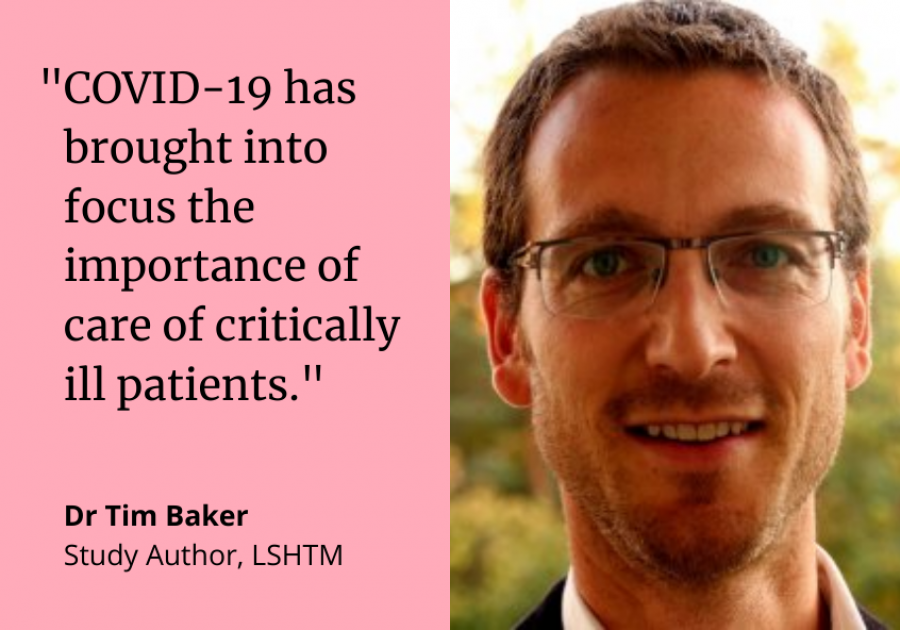40 steps to reduce deaths from critical illness
21 September 2021 London School of Hygiene & Tropical Medicine London School of Hygiene & Tropical Medicine https://lshtm.ac.uk/themes/custom/lshtm/images/lshtm-logo-black.png
A blueprint for hospitals on how to reduce preventable deaths worldwide due to critical illness, including from COVID-19 has been set out in a new study published in BMJ Global Health.
Researchers from the Karolinska Institutet, the London School of Hygiene & Tropical Medicine (LSHTM) and the Ifakara Health Institute, Tanzania, worked with a panel of more than 260 global experts to develop Essential Emergency and Critical Care (EECC). This concept lays out a set of life-saving treatments and actions for critically ill patients, which they say should be feasible to implement in all hospital settings around the world due to low cost and complexity.
In this study, the expert panel of 269 clinicians and scientists from a range of high-, middle- and low-income countries and various medical specialties agreed on a package of 40 clinical processes and 67 hospital readiness requirements to benefit critically ill patients. These processes include the identification of critical illness and care of patients, and general processes aimed at facilitating safe and functioning workflow. The experts also recommended seven clinical processes and nine hospital readiness requirements specifically for patients critically ill with COVID-19.
Study author Dr Tim Baker, Associate Professor at LSHTM, the Karolinska Institutet and Ifakara Health Institute, said: “The COVID-19 pandemic has brought into focus the importance of care of critically ill patients. If all hospitals in the world were enabled to provide EECC to all their critically ill patients, many lives could be saved, both during the pandemic and afterwards.”
The researchers believe that the inclusion of the EEEC processes could not only be used across medical specialties worldwide to save critically ill patients, but also increase the impact of pandemic preparedness and response programmes and policies aimed at strengthening health systems.
Critical illness results in millions of deaths globally every year, many of which could be avoided with basic, life-saving care. It occurs when a patient’s vital organs become dysfunctional, compromising their airway, breathing or circulation, and there is a risk of imminent death.
Early identification of the issue and timely care can be lifesaving. Unfortunately, this care is sometimes neglected in hospital settings around the world and improvements in the way healthcare manages critical illness could save many lives. This study marks a break from previous guidelines that tend to be specific to the specialty, condition or location, and may be too complex and costly to provide in all hospital settings.
Carl Otto Schell, PhD student at the Karolinska Institutet and consultant physician at Nyköpings Hospital, and study author, said: “With the EECC package, we present health workers and policy makers with an essential toolbox consisting of effective and low-cost care that all hospitals should be able to provide. By adopting these, in some cases small changes in practices, hospitals around the world would be able to reduce the high mortality rates of critically ill patients.”
In this study, the experts rated a range of proposed treatments and actions over three rounds, adapted from the World Health Organization’s guidelines on Basic Emergency Care.
These processes included the regular assessment of vital signs, such as pulse rate, oxygen saturation and blood pressure, to identify critical illness, and the care of patients with a threatened airway, difficulty breathing, compromised circulation or a reduced level of consciousness using simple things like body positioning, oxygen therapy, and intravenous fluids.
They also recommend processes to create a safer working environment – such as communication practices and the separation of patients with contagious diseases – and a list of items required for hospitals to be ready to identify and care for critically ill patients, including equipment, drugs, training and infrastructure.
Given the surge of critical illness during the ongoing pandemic, the study includes a section specifically related to care for patients who are critically ill with COVID-19, including the frequent monitoring of oxygen saturation and use of heparin and corticosteroids.
The researchers acknowledge limitations of this study, including that it is expert-opinion based so limited to the make-up of the panel, which did not represent all countries.
The researchers have created the EECC Network website, a community of clinicians, researchers, policymakers and the public who wish to improve the care of critically ill patients throughout the world.
This study was funded by the Wellcome Trust and the Centre for Clinical Research Sörmland, Uppsala University.
Publication
Carl Otto Schell et al. Essential Emergency and Critical Care – a consensus among global clinical experts. BMJ Global Health. DOI: 10.1136/bmjgh-2021-006585
LSHTM's short courses provide opportunities to study specialised topics across a broad range of public and global health fields. From AMR to vaccines, travel medicine to clinical trials, and modelling to malaria, refresh your skills and join one of our short courses today.